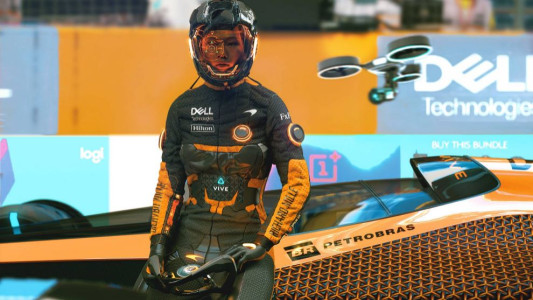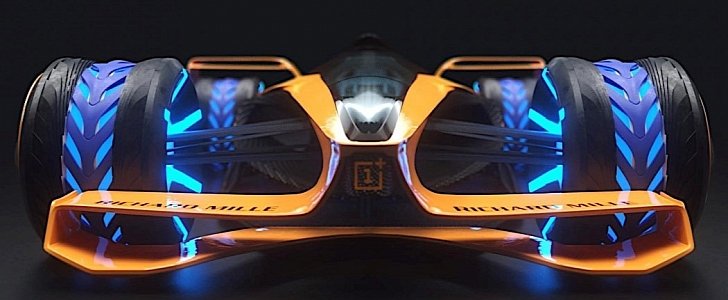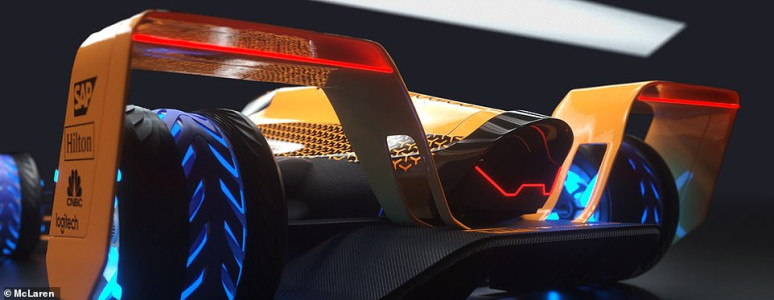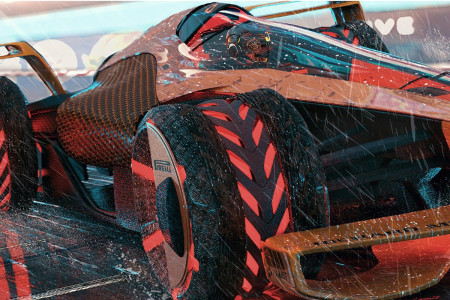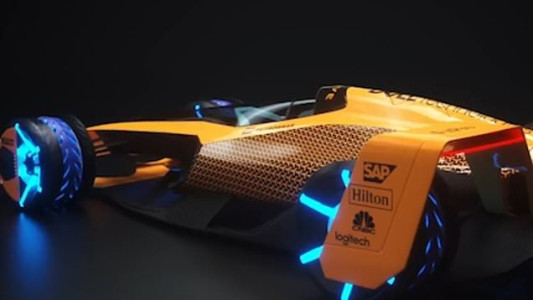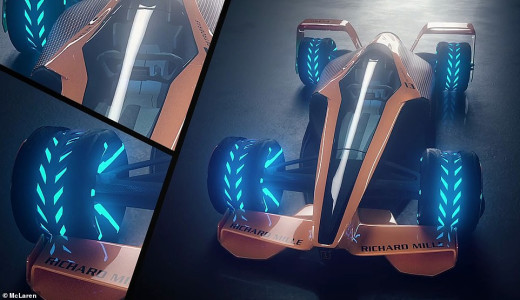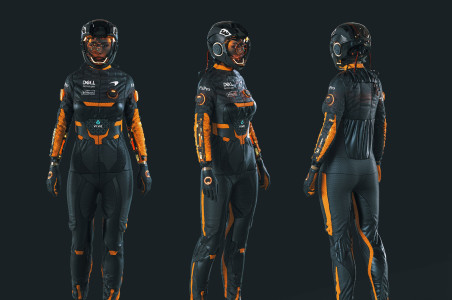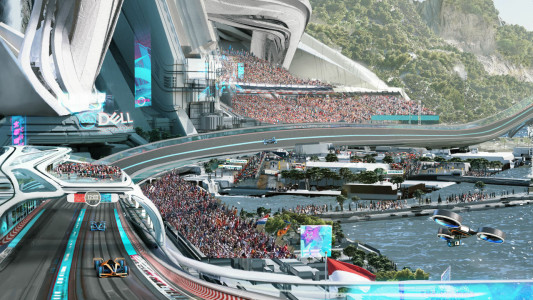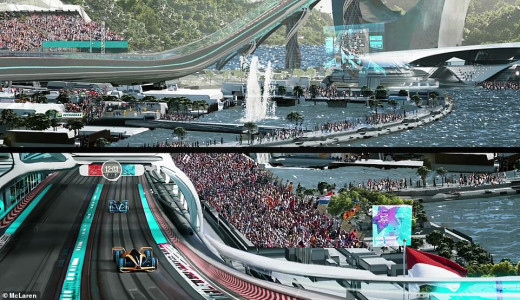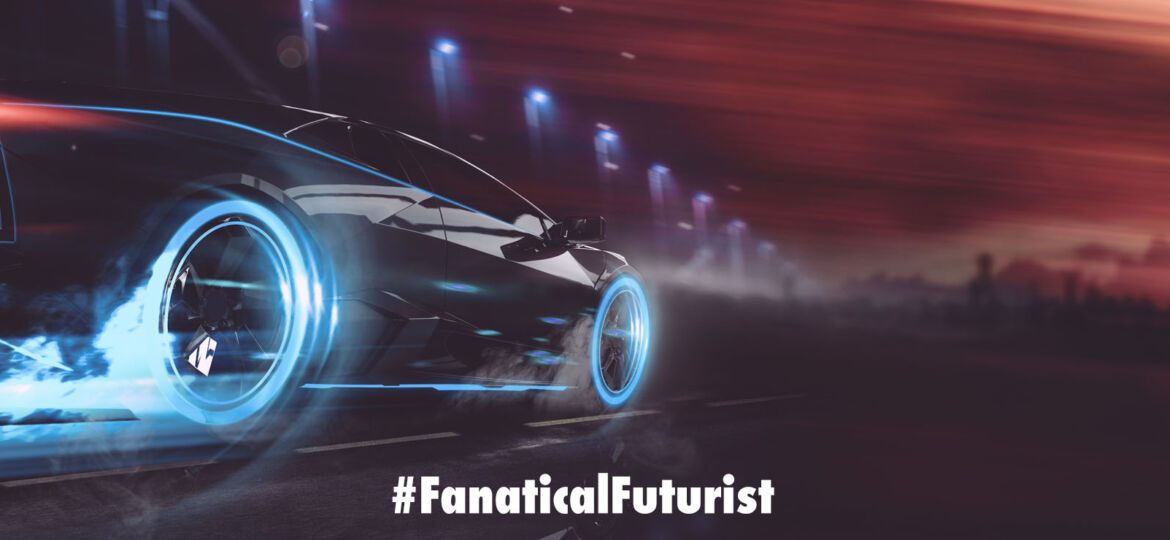
WHY THIS MATTERS IN BRIEF
While even the best and brightest minds can try to imagine life thirty years in the future the likelihood is that what’s possible will make even today’s grandest concepts rather tame.
 Interested in the Exponential Future? Connect, download a free E-Book, watch a keynote, or browse my blog.
Interested in the Exponential Future? Connect, download a free E-Book, watch a keynote, or browse my blog.
McLaren Applied Technologies (MAT), the Formula 1 team’s sister company, has unveiled an extreme concept of how grand prix racing could look in 2050.
As part of the vision the company released images of a car concept dubbed the MCLExtreme, a 500km/h (310mph) rear-wheel drive electric car powered by a “foldable battery moulded to the aerodynamic package,” and a host of other eye candy.
That said though, and I can’t resist sticking my futurist’s nose in to the conversation, they could have also turned to a technology concept known as Structural Batteries where the shell of the car itself is the battery that Lamborghini are lining up for their futuristic hypercars in 2030, or they could even have talked about incorporating spray on solar panels that work in the rain and have 80 percent energy conversion efficiency which would have let them eliminate batteries altogether like some of the cars we’re already seeing emerge from Hyundai, Light Year and Toyota.
Furthermore, today we’re already seeing how products such as robots are able to evolve and manufacture themselves – at a hardware and software level – and there’s the issue of manufacturing the car which will inevitably be 3D printed, complete with electronics and sensors embedded into the chassis, or more likely 4D printed, where the forth dimension is time and where the car could print and then assemble itself autonomously, topped off with an intelligent skin.
Courtesy: McLaren
MAT also suggest that the car would be “shape-shifting,” but don’t go into specific details, and would include an onboard Artificial Intelligence (AI) co-pilot along with “self-healing tyres,” although I don’t think they’re talking about the self-healing kind of rubber tyres that Harvard University recently showed off. That’d be far to “traditional” for them. But again they don’t go into details so perhaps they’re talking about self-healing combination tilt-rotor tyres like the ones Goodyear recently showed off that could turn the MCLExtreme into a flying F1 car… who knows. And as for shape shifting, well they have plenty of emerging materials to choose from, from new polymorphic alloys through to digital metamaterials that could make the cars invisible on demand… Now that I’d pay to not see. Pun intended.
It is not the first time McLaren has unveiled a futuristic concept, having shared its MP4-X idea in December 2015. But MAT’s Future Grand Prix “vision” goes much further, assessing what car, driver, tracks and fan experiences could evolve into.
McLaren says it conducted “extensive research that included speaking to fans, assessing international policy on vehicle electrification and emission targets” and “evaluating how human and car technology is likely to change.”
Their idea also includes futuristic race circuits with huge sidewinding banks, pitlanes with the capacity for battery charging, although as mentioned cars likely won’t need batteries in 2050 and even if they did we already have wireless charging coming through for EV’s so who needs pit lane charging anyway, and they also posit circuits that can adapt to extreme weather.
Perhaps one of the more interesting concepts though is the idea of “black-out-zones with no communication or AI assistance for the driver”, who would have a specialised race suit reinforced to handle extremely high speeds, and the AI co-pilot element would “learn” from its driver, whose emotion would be “reflected on the chassis”.
McLaren’s circuit concept also includes transparent rooves to allow fans to see more track action, and fan engagement is another element that has been explored in detail.
They envisage “fan sentiment being projected in the cockpit of the car,” imagine that, and what they call “mixed reality giving fans access to multiple camera angles and race data.”
E-sports competitors would be able to compete in the race virtually, in real-time – something that has been explored already in Formula E – while gamers could race the track before each grand prix to “teach the AI co-pilots new race strategies.”
Explaining the concept, MAT motorsport director Rodi Basso said: “We are always looking to innovate to find the solution for tomorrow today. In recent years, we have seen concepts and ideas about how a Formula 1 car could look and operate in the future. However, this is the first time anyone has given detailed thought and insight into a viable vision of motorsport in the future. Our hope is for this to stimulate debate about how motorsport responds to changes in technology and sports entertainment trends to ensure we can meet the needs of fans in 2050.”
There is little doubt that the future of racing will be awesome, but my hunch is that it will be even more awesome than even MAT think so I’ll see you in 2050.

